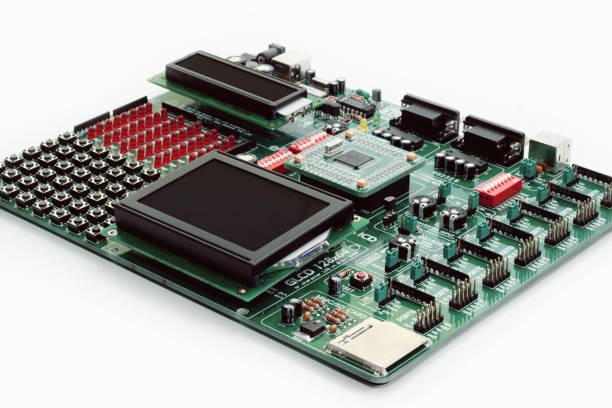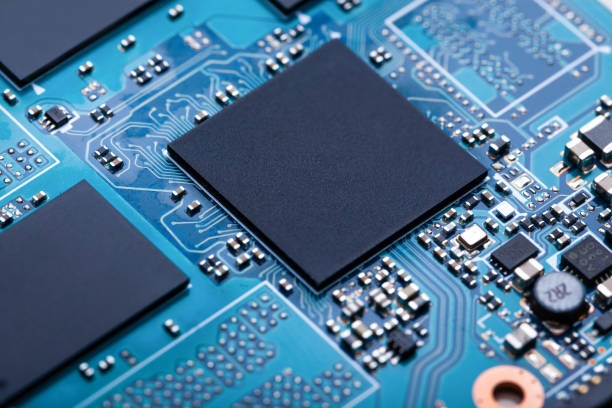Pull-up and pull-down resistors are essential in microcontroller (MCU) circuits to ensure stable input states and reliable operation. This article explains their concepts, applications, and considerations for selecting appropriate resistor values.
What Are Pull-Up and Pull-Down Resistors?
In MCU circuits, pull-up and pull-down resistors stabilize the voltage level of an input pin, preventing it from floating in an undefined state. Consider a circuit where an MCU detects the state of a switch.
Without a resistor, when the switch is open, the MCU's I/O pin is in a floating state, making it susceptible to noise and unpredictable readings. A pull-up resistor connects the pin to the supply voltage (Vdd), ensuring a high logic level (1) when the switch is open. Conversely, a pull-down resistor connects the pin to ground, ensuring a low logic level (0).
Pull-Up Resistor
A pull-up resistor pulls the I/O pin to Vdd when the switch is open, setting the pin to a high state. When the switch closes, the pin connects to ground, reading a low state (0).
Pull-Down Resistor
A pull-down resistor pulls the I/O pin to ground when the switch is open, setting the pin to a low state. When the switch closes, the pin connects to Vdd, reading a high state (1).
Choosing Resistor Values
The resistor value must balance power consumption and signal stability:
- Too Small: A very low resistance causes high current flow when the switch closes, increasing power consumption and potentially damaging components.
- Too Large: A very high resistance weakens the pull-up or pull-down effect, leaving the pin closer to a floating state and susceptible to interference.
Typical values range from a few kilohms to tens of kilohms (e.g., 4.7k¦¸ to 47k¦¸), balancing power efficiency and signal integrity.
Strong vs. Weak Pull-Up/Down
The terms "strong" and "weak" describe the resistor's effect, determined by its value:
- Weak Pull-Up/Down: Larger resistance (e.g., 40k¦¸), lower current, weaker effect.
- Strong Pull-Up/Down: Smaller resistance (e.g., 4.7k¦¸), higher current, stronger effect.
These are relative terms, and the choice depends on the application's requirements.
Internal Pull-Up/Down Resistors in MCUs
Many MCUs, such as the STM32F103, include configurable internal pull-up and pull-down resistors, typically around 40k¦¸, classified as weak. These can be enabled or disabled via software, eliminating the need for external resistors in some cases.
Pull-Up Resistors in Open-Drain Outputs
Pull-up resistors are also critical for open-drain (or open-collector) outputs, commonly used in MCU I/O pins. In an open-drain configuration, the output pin can only pull the signal low (0) when the internal NMOS transistor is on. When off, the pin is in a high-impedance state, unable to drive a high signal (1) without an external pull-up resistor connected to Vdd.
This configuration offers flexibility:
- Voltage Level Matching: By connecting Vdd to 1.8V, 3.3V, or 5V, the high-level output can match different logic levels.
- Wired-AND Logic: Multiple open-drain pins connected together produce a high output only if all pins are high; any pin pulling low forces the output low.
This structure is common in protocols like I2C, where pull-up resistors enable communication between devices.
Resistor Value Considerations for Open-Drain
Selecting a pull-up resistor for open-drain outputs requires careful consideration:
- Too Small: Excessive current may exceed the I/O pin's sink capability, risking damage.
- Too Large: Large resistors, combined with bus capacitance, slow the rise time of the signal, potentially affecting communication speed (e.g., in I2C).
For detailed calculations, Texas Instruments provides a guide on I2C pull-up resistor selection, considering factors like bus capacitance and timing requirements.
Conclusion
Pull-up and pull-down resistors are vital for ensuring stable MCU input and output signals. By selecting appropriate resistor values and leveraging internal or external resistors, engineers can optimize circuit performance, power efficiency, and reliability in applications ranging from simple switches to complex communication buses.
 ALLPCB
ALLPCB







